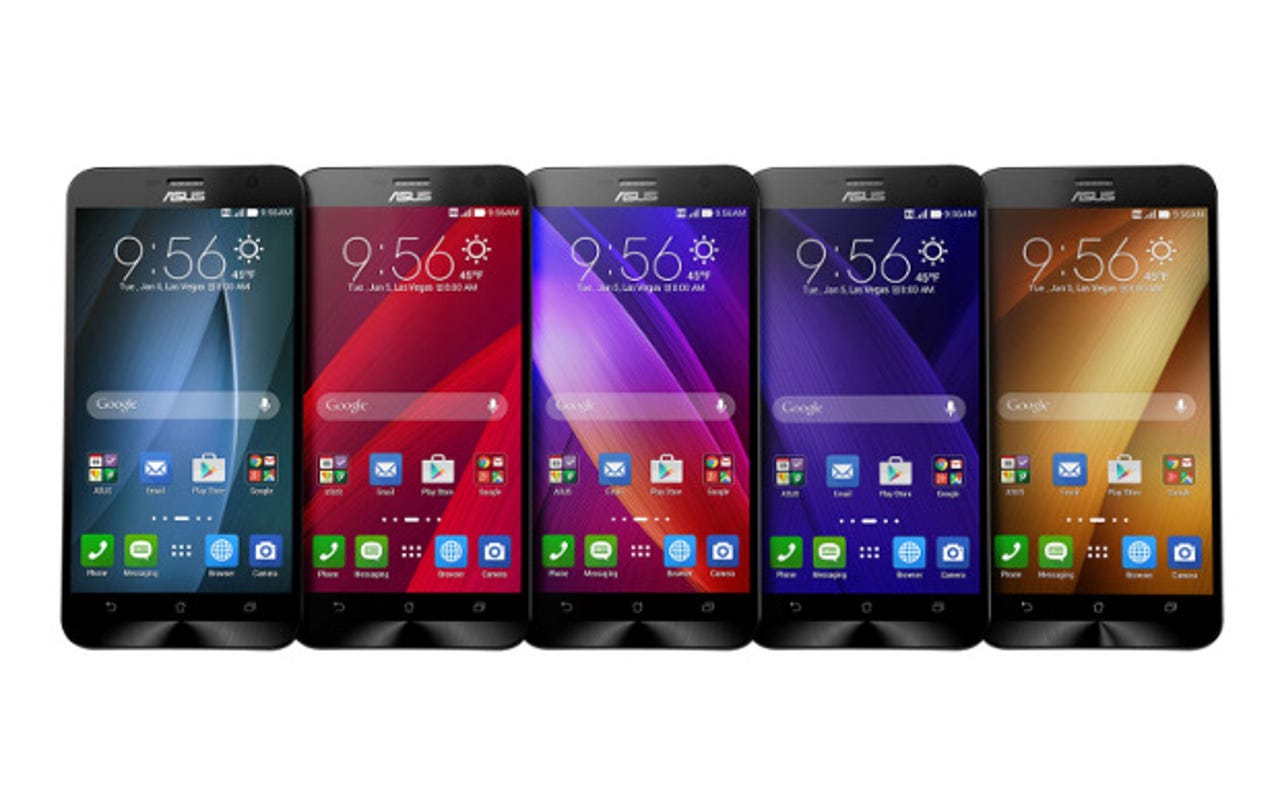Asus ZenFone 2 first impressions: Plenty to like so far for $299

Although there are several good flagship Android phones on the market, I tend to stick with handsets that are bit less expensive. Why pay $600, $700 or more, I figure when I can get close to the same software and hardware experience for much less?

Yes, you get what you pay for, but I don't care as much for large phones and most of the latest and greatest devices do have big screens. I opted to buy an unlocked $579 Moto X last year -- I got a $150 holiday discount for final price of $429 -- partly for this reason.
Now Asus has its ZenFone 2 available with two models to choose from priced at $199 and $299. Earlier this week, I ordered the latter model from Amazon and it recently arrived. I'll be putting it through the paces for a full review in the coming days but here are my first impressions.
What do you get for $299?
I chose the higher priced model because it has improvements that I think are well worth the extra expense. This version has double the memory with 4 GB of RAM and includes 64 GB of storage, or four times the capacity of the less expensive version. It also uses a slightly faster processor: The Intel Atom Quad Core Z3580 running at 2.3GHz. The lesser model uses a a Z3560 Atom clocked at 1.8 GHz.
Aside from those differences, the two ZenFone 2 models are identical. Both have a 13 megapixel rear camera, 5 megapixel front camera, 3000 mAh non-removable battery, dual SIM card slots, microSD card expansion, Bluetooth 4.0, 802.11ac Wi-Fi, GPS, NFC and 5.5-inch IPS display running at 1920 x 1080 resolution.
Actually, there is one other minor difference. Although both devices support fast charging, only the $299 model includes the compatible charger to quickly recharge your battery. Asus says it can go from zero to 60 percent in just 39 minutes with this charging brick.
Look and feel
Although I don't care as much for large phones, the ZenFone 2 isn't bothering me that much. That's because it's small for a big handset that weighs 170 grams. By that I mean it's actually not much larger than my Moto X, which has a 5-inch display. And it's smaller than my son's iPhone 6 Plus even though that handset also has a 5.5-inch screen like the ZenPhone 2.
I'm already not a fan of the button placement, however. The power/wake button is a small, shallow button on the very top of the phone; it's not easy for me to reach. I'm getting around that by using the "knock to wake" function; knock twice on the display and the phone wakes up.
On the back of the ZenFone 2 you'll find the volume buttons. This is similar to the LG G4 and it's taking me some time to get used to. Over those buttons is the main camera sensor and dual-tone LED flash. There's no optical image stabilization here but Asus claims it can manage that with software. The camera also has a Super HDR mode to expand the dynamic range of images by up to 400 percent. I'll test those claims over the weekend in advance of my review; I'm already seeing a fair amount of focus lag on my first few shots, though.
To get at the slots for the SIM cards and microSD card, you have to remove the back cover of the phone. It's a rounded, plastic covers that's etched to look like metal. It's not easy to pry off and it feels a little cheap to me.
Software and initial performance
Out of the box, the ZenFone 2 runs Android 5.0, so it's pretty current in terms of software. Asus has put its own twist on top of Android with its ZenUI interface and settings screen. So far, it's not too bad although I personally prefer a stock Android look.
Google I/O
And like many other Android phones you'll find duplicate apps: Two music players, and two browsers for example. Oddly, the stock Android Calendar and Contacts apps are in the Asus software folder; not in the Google folder.
Some of Asus's own features include a Glove mode, one-handed mode, ZenMotion which adds touch and motion gestures, an Easy Mode (although I don't think it's needed with this fairly basic UI), an auto-start app manager, and various sound modes for movies, games, and other scenarios.
I do like that there's a basic File Explorer included. But as a fan of Google Now -- which is changing how we get to apps -- I miss the dedicated Google Now home screen. That's something I can fix on my own, however.
For the most part, the handset seems responsive and snappy. Moving through apps I haven't seen any lag. So far, the only sluggishness I've seen is when typing on the software keyboard. Occasionally, I'll tap out a few letters and then after a short delay, they appear in a text field.
Those interested in benchmarks will appreciate the Google Octane score I ran in Chrome; this tests the JavaScript performance of the browser and is highly dependent on the processor. The ZenFone 2 scored 7651, which is comparable to some of the low-cost Intel-powered Chromebook laptops available today.
YouTube performance watching a few 1080p videos is quite good, with no stuttering or lag. There's only a single speaker on the phone but it's plenty loud enough for watching video without headphones. I don't mind that the screen is "only" 1080p resolution either; even with a 5-inch screen, video and app usage looks immersive and crystal clear from all angles.
So far, so good but there's more to come
It's too early to say if this $299 off-contract phone is worth the price but based on my first impressions, it seems to be. I need to spend more time with the camera -- both for stills and video capture -- and my everyday apps to have a better idea of the ZenFone 2's value.
I'm particularly interested in the battery life as well since the handset uses an Intel processor; even with the quick charge technology, I'd expect to easily get through a full day on a single charge with a 3000 mAh battery and 1080p display. Stay tuned for a detailed review and be sure to let me know if you have any particular questions I can address by leaving a comment.
Related: Don't want to spend $700 or more for a phone? Six compelling smartphones under $300